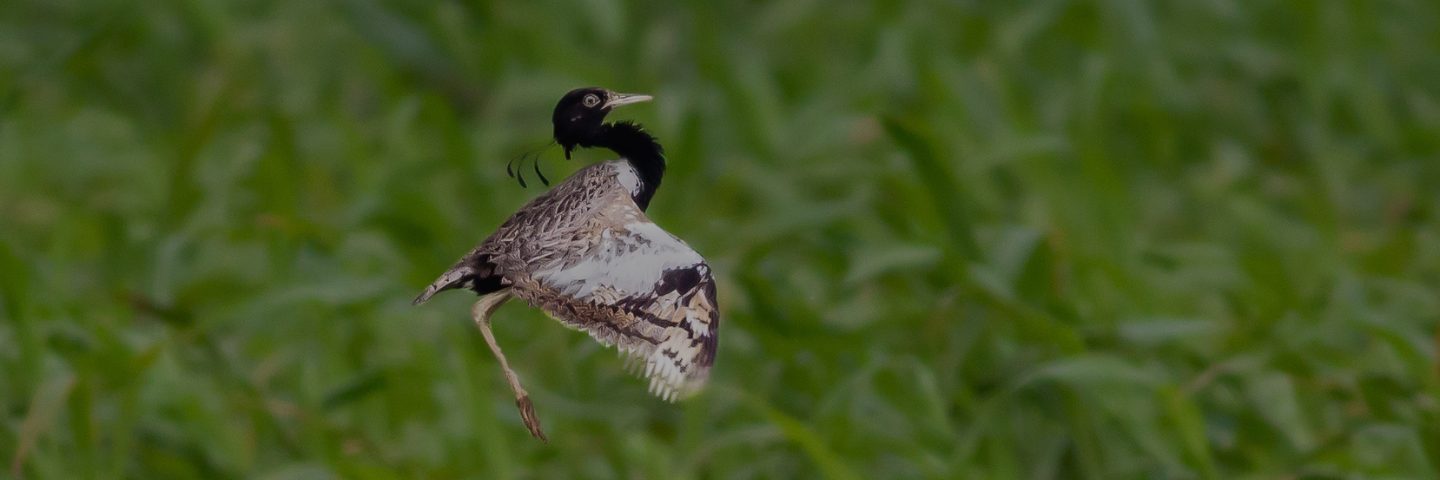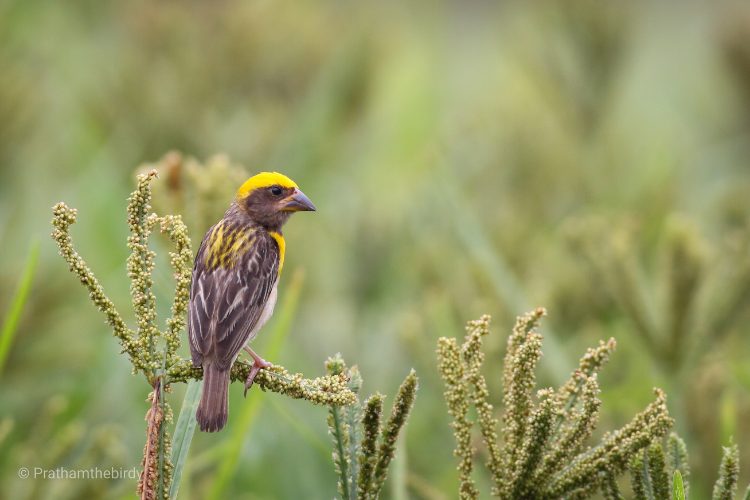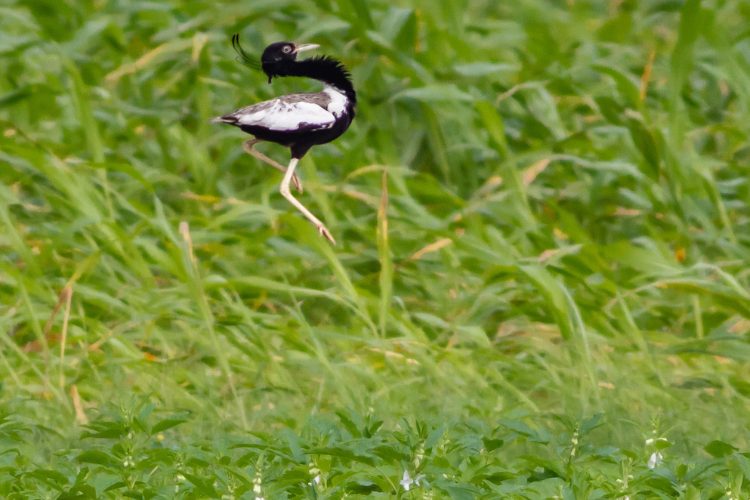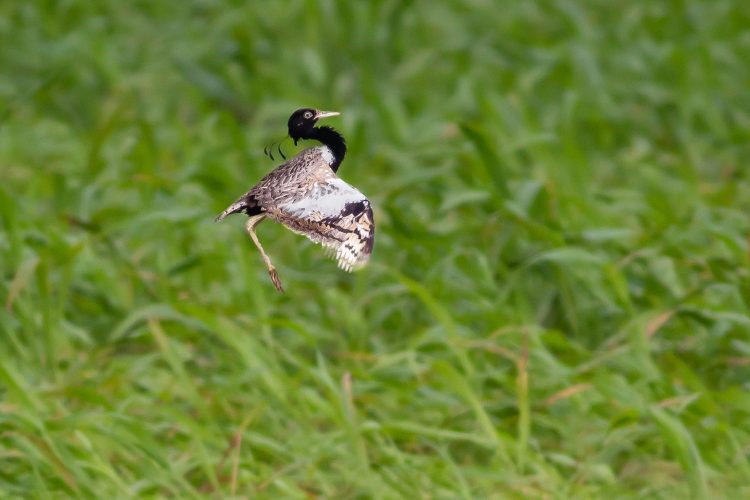Sonkhaliya is a hidden hamlet about 40 km from the Ajmer district of Rajasthan. Like all grasslands, Sonkhaliya is open and flat, garnished by meandering pathways and moderate rainfall, this lush destination has evolved into a haven for birdwatchers. You might be wondering what exactly this nondescript grassland offers that is so unique that it has stolen the interest of hordes of tourists worldwide. To answer your question: Lesser Florican and Great Indian Bustard! These two beautiful, vibrant and critically endangered species have rapidly decreased in numbers over the past years. Sonkhaliya remains one of the few places these glorious birds have sought refuge in. You can spot the Lesser Florican and its eccentric mating call in July and August in this fortunate land.
Good To Know
Country
India
Country
State
India
Rajasthan
Country
Nearest Airport
India
Jaipur Airport
Country
Wildlife Sighting Index
India
9/10 for Lesser Florican
Country
Beauty of Forest Index
India
8/10 for Beauty
Country
Standard of Infrastructure Index
India
7/10 for Stay & Amenities
Country
Bookings Open
India
60 Days in Advance
Country
Consider Securing
India
30 Days in Advance
Fauna of Sonkhalia
The Lesser Florican is a shy bird, typical of grasslands. Its size is not more than a village hen and is known as “Khar Mor” in Hindi. This elusive bird is seldom spotted outside of its breeding season. During the breeding season, the male Lesser Florican demonstrates a peculiar mating ritual which includes jumping up to metres high in the sky, risking its life, flapping its wings like it’s been shot out of a spring and showing off its magnificent design of feathers and wings.
At the climax of its leap, the Lesser Florican has its head bent backwards and legs folded as if sitting. Then the male pronounces a special courting call often similar to a “tak tak tak” before it lands on the ground. To woo the female Lesser Florican, the male repeats this ostentatious performance several times a day. Sometimes, the male also does this to assert dominance, and if you’re lucky, you can even witness two males performing this lovely ritual while competing with each other! Truly a nature’s wonder to behold. Apart from the Lesser Florican, the Great Indian Bustard is a smaller bird and is rarely sighted in the winters. Another rare species found in this grassland is the Godawan.
Some other prevalent species in the region include Eurasian Eagle Owl, Spotted Owlet, Larks, Pipits, Quails, Francolins, Sandgrouse, Lapwings, Raptors, Coursers, Munias and Doves. Rock Bush Quails also frolic in the open meadows in packs, moreover, small groups of Rain Quails can also be witnessed while exploring the region. Scores of Grey Francolins can also be observed. Some Common Passerines included Southern Grey Shrikes, European and Indian Rollers, Plain and Ashy Prinias, Desert and Isabelline Wheatears, Pied-crested Cuckoos, plenty of Indian Bushlark, Ashy-crowned Sparrow Larks and Rufous-tailed Larks. The rich fauna of this land is fascinating to witness. The plethora of avifauna entertains the visitors by singing their birdsongs across the grassland.
- Indian Eagle Owl
- Lesser Florican
- Great Indian Bustard
- White-Eyed Buzzard
- Rufous Fronted Prinia
- Jungle Bush Quail
- Rock Bush Quail
- Grey Francolin
- Chestnut Bellied Sandgrouse
- Indian Courser
- Ashy Crowned Sparrow Lark
- Yellow Wattled Lapwing
- Southern Grey Shrike
- Indian Roller
- Eurasian Roller
- Indian Bush lark
- Black Shouldered Kite
- Rain Quail
- Indian Peafowl
- Jungle Babbler
- Common Babbler
- Red Wattled Lapwing
- Cattle Egret
- Little Cormorant
For Package Details & Enquiry
History of Sonkhaliya
This 138 square kilometres wide grassland had become a haven for Lesser Floricans in their breeding season. These flagship birds along with the Great Indian Bustard have faced a rapid reduction in numbers due to habitat loss, poaching and overuse of pesticides. Only a few pockets of places in India like Rajasthan, Madhya Pradesh and Gujarat still boast the sighting of these threatened creatures. Along with the strenuous efforts of the forest department, the villagers of Ajmer also came together to dedicate 30 hectares of land for the breeding activity of these Lesser Floricans. The Sonkhaliya region of Ajmer was initially designated for gram cultivation. However, after subsequent losses, the Agriculture Department advised the local farmers to shift to Mung cultivation. In 2005, this shift was officially made. Mung cultivation was beneficial for both the farmers and the birds as it only took 60 days to grow and required much fewer amounts of chemicals and pesticides for its growth. Over time, the numbers of Lesser Floricans and Great Indian Bustards flourished and gradually Sonkhaliya became a popular destination to witness these rare birds.
Things to Enjoy at Sonkhaliya
The primary reason to visit Sonkhaliya is for birding purposes. This short trip will yield countless encounters with all kinds of beautiful birds in the area. The Sonkhaliya grasslands are covered with lush greenery and pretty views. The village itself is a typical untouched north Indian village. Small huts, improper roads (kutcha roads) with puddles in your way, curious children playing around and adult gatherings around the wells are common sights in the area. While all of this adds to the intimate experience of this grassland, the main attraction in Sonkhaliya is the leaping breeding displays in the monsoon seasons. The male Lesser Floricans appear for seconds above the tall crops, making croaking noises before they disappear and another bird leaps from somewhere nearby. These alternate leapings continue all day and are a very fun sport to observe. However, this is not all as these fertile lands are a refuge for countless other birds. You can spot many vibrant feathered creatures flying above your head, perched on a tree, or simply running away in packs as your Jeep passes by the area. Travelling to Sonkhaliya from Ajmer is usually done on Jeeps, these fast vehicles are good for quickly taking you through the open meadows while also giving you an outdoor experience of the land. In the heart of the action, you can climb out of your vehicle and continue your exploration on foot. Make sure to pack a pair of binoculars and a good camera as you will want to reminisce about the unique sightings of this land in the future. While in Ajmer, there is the very famous “Dargah” and nearby in “Pushkar” the one and only “Brahma Temple” and you should visit both.
How to reach Sonkhaliya
Sonkhaliya is approximately 40 km from Ajmer on Kota Nasirabad Highway. The village is approximately 6KM from NH-76 Highway, from Kota Mod Choraha (Kota Road) towards Kota and can be easily accessed via train or car. The Ajmer Junction railway head is the closest rail station. It is well connected to major cities in India and has frequent trains connecting from Ahmedabad, Udaipur and New Delhi. Pick up at the Ajmer station can be arranged depending on your tour guide, however, you can also simply book a cab or taxi till your accommodations. From there, jeep rides will be arranged to travel to Sonkhaliya.
Places to stay at Sonkhaliya
There are a few hotels to have a comfortable stay in Ajmer. There is a lack of proper hotels and resorts in Sonkhaliya itself but you will find plenty of hotel options a few kilometres away. Mostly, travellers prefer to stay in Ajmer and travel via Jeeps to Sonkhaliya for the birding trip. Hotel NeelKamal is a popular choice for a stay in Ajmer. This budget-friendly hotel offers twin-bed sharing accommodations along with air-conditioning. The ambience is neat and clean along with small shops for convenience below the building. There are also Forest Rest Houses in Ajmer that you can check into while on this trip. Other more expensive options include Mansingh Palace, Hotel Kanhaia Haveli, Hotel Ajmer Inn, Hotel Shanti Palace and Clarks Resort Bandanwara.








